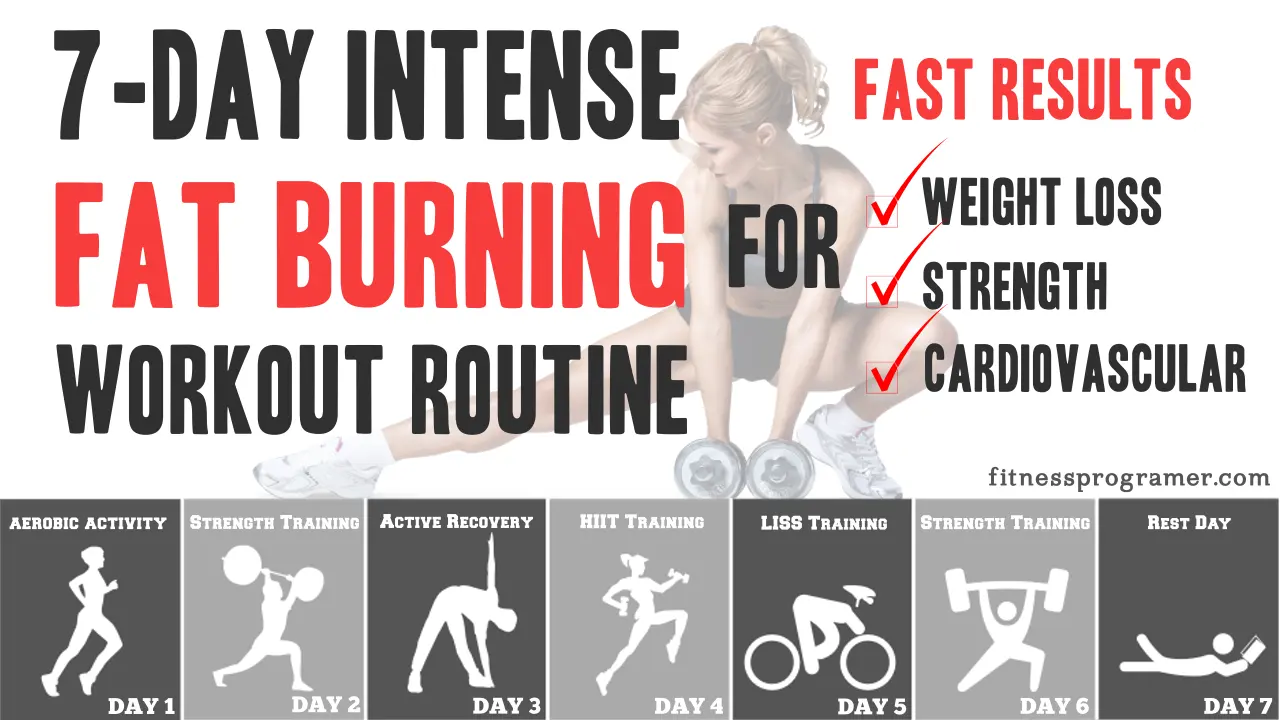Contents
Are you looking to shed those extra pounds, boost your metabolism, and improve your overall health? A well-rounded fat-burning workout routine can help you achieve these goals. We understand the desire for quick results, and that’s why we’ve designed this 7-day intense fat-burning workout routine. It’s a challenging but effective plan that, when combined with proper nutrition and consistency, can help you jump-start your fat loss journey.
The 7-day intense fat burning workout routine combines cardiovascular exercises, strength training, active recovery, and HIIT to provide fast and effective results. By following this structured routine, you can accelerate your fat loss, increase muscle tone, and improve your overall fitness level. Incorporate this routine into your lifestyle, and you’ll be well on your way to achieving the results you desire.
Why Focus on Fat Burning Workout Routine?
Before diving into the workout routine, let’s briefly discuss why fat burning is a top priority for many fitness enthusiasts:
- Weight Loss: Burning fat is a key component of losing weight and achieving a healthier body composition.
- Increased Strength: Strength training is essential for fat burning and strengthening your muscles, making it an integral part of any intense fat burning workout routine.
- Increased Metabolism: Building lean muscle through strength training and cardio boosts your metabolism, helping you burn more calories even at rest.
- Improved Cardiovascular Health: Cardio workouts enhance heart health and increase endurance.
- Energy Boost: Regular exercise releases endorphins, boosting your mood and energy levels.
- Long-term Health Benefits: Reducing excess body fat is linked to a lower risk of chronic diseases like diabetes and heart disease.
Let’s dive into this intense week-long workout regimen.
Day 1: Cardiovascular Training
Benefits:
- Accelerates Fat Loss: Cardiovascular exercise burns a significant number of calories and is crucial for shedding excess body fat.
- Boosts Cardiovascular Health: It improves heart and lung function, reducing the risk of heart disease.
- Increases Endurance: Regular cardio exercises enhance your stamina, allowing you to perform physical activities more comfortably.
Main Workout (30-45 minutes): Choose one of the following cardiovascular exercises and aim to sustain it for the specified duration:
Warm-up (5-10 minutes):
- Start with light jogging in place or brisk walking to gradually increase your heart rate.
- Incorporate dynamic stretching exercises such as leg swings, arm circles, and hip rotations to improve flexibility and prevent injury.
1. Running or Jogging:
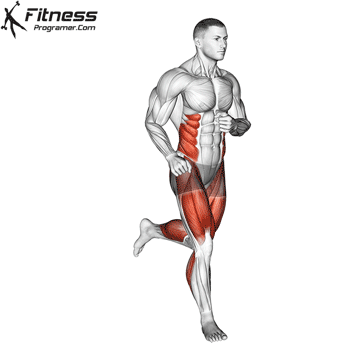
- Find a suitable route, whether it’s around your neighborhood, a park, or a treadmill at the gym.
- Begin at a comfortable pace, and if possible, gradually increase your speed or add intervals of faster running.
2. Cycling:
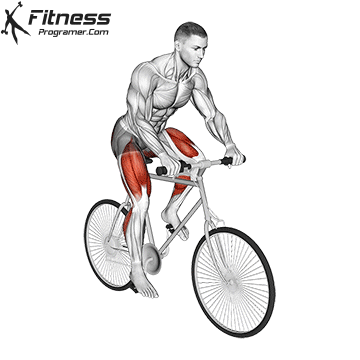
- Ride your bicycle outdoors or use a stationary bike at the gym.
- Adjust the resistance or incline as needed to challenge yourself.
3. Jump Rope:
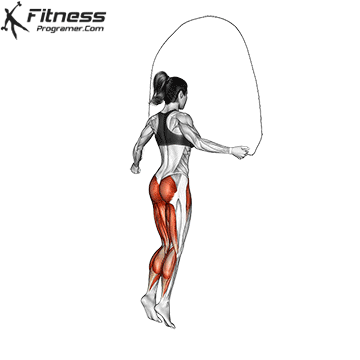
- Jump rope continuously for the designated time.
- You can vary your jump rope routine by incorporating different techniques, like double-unders or high knees.
During your main workout, aim to maintain a steady pace that keeps your heart rate elevated but still allows you to carry on a conversation. If you’re using a treadmill, stationary bike, you can vary the intensity by adjusting the speed, resistance, or stroke rate.
Day 2: Strength Training
Benefits:
- Burns Calories: Strength training increases muscle mass, which, in turn, boosts your metabolism, helping you burn more calories even at rest.
- Enhances Muscle Tone: It sculpts your body by toning and defining muscles.
- Improves Functional Strength: Strength training enhances your ability to perform everyday tasks with ease.
Full-body Strength Training: Perform the following strength training exercises, aiming for 3 sets of 8-10 reps for each exercise. Use a weight that challenges you but allows you to complete the desired repetitions with proper form. Rest for about 1-2 minutes between sets.
1. Goblet Squats:
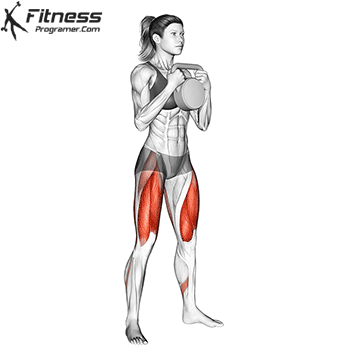
Proper Form:
- Stand with your feet shoulder-width apart and hold a dumbbell or kettlebell close to your chest.
- Keep your chest up, back straight, and core engaged.
- Lower your body by bending your knees and pushing your hips back, as if you are sitting back into a chair.
- Lower yourself until your thighs are parallel to the ground or as far as your flexibility allows.
- Push through your heels to return to the starting position.
2. Romanian Deadlifts:
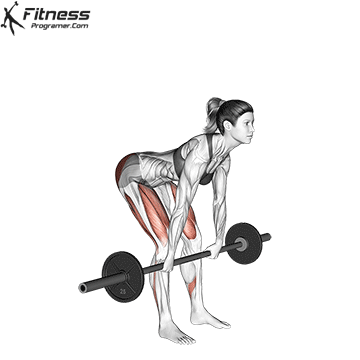
Proper Form:
- Stand with your feet hip-width apart, holding a barbell or dumbbells in front of your thighs with an overhand grip.
- Keep your back straight, shoulders back, and core engaged.
- Hinge at your hips while maintaining a slight bend in your knees.
- Lower the weight towards the ground by pushing your hips back and keeping the weight close to your body.
- Lower the weight until you feel a stretch in your hamstrings or your back begins to round.
- Return to the starting position by driving your hips forward.
3. Overhead Press:
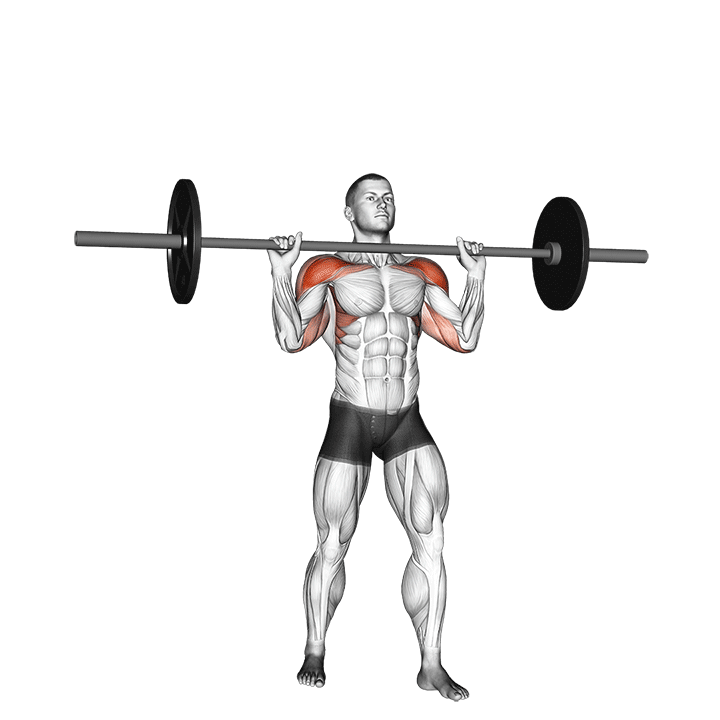
Proper Form:
- Stand with your feet shoulder-width apart and hold a barbell or dumbbells at shoulder height.
- Press the weight upward until your arms are fully extended overhead.
- Lower the weight back to shoulder height.
4. Bench Press:
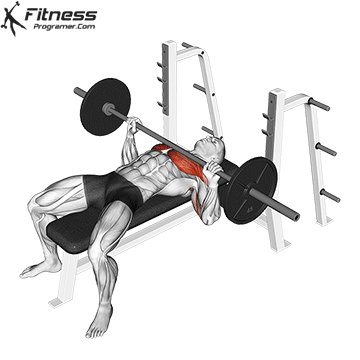
Proper Form:
- Lie flat on a bench with your feet flat on the floor.
- Grip the barbell with your hands slightly wider than shoulder-width apart.
- Lower the barbell to your chest, keeping your elbows at a 90-degree angle.
- Push the barbell upward until your arms are fully extended.
5. Bent-over Rows:

Proper Form:
- Stand with your feet shoulder-width apart and hold a barbell or dumbbells in front of your thighs with an overhand grip.
- Bend at your hips while maintaining a straight back, keeping your chest up and core engaged.
- Lower the weight toward the ground while keeping it close to your body.
- Pull the weight towards your lower ribcage, squeezing your shoulder blades together.
- Lower the weight back to the starting position.
6. Planks:
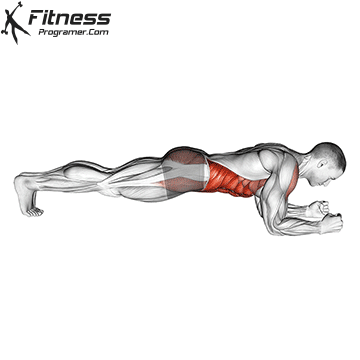
Proper Form:
- Start in a push-up position with your elbows directly under your shoulders and your body in a straight line from head to heels.
- Engage your core and hold this position, keeping your body as straight as possible.
- Avoid sagging your hips or lifting your hips too high.
After completing these exercises, cool down with some static stretching to improve flexibility and reduce muscle tension. Focus on stretching the muscles you’ve worked during your strength training session.
Day 3: Active Recovery
Benefits:
- Reduces Muscle Soreness: Active recovery promotes muscle repair and reduces post-workout soreness.
- Enhances Flexibility: Stretching exercises improve joint mobility and flexibility, reducing the risk of injuries.
- Prevents Overtraining: Scheduled rest and recovery days prevent overtraining, which can lead to burnout and injury.
Active recovery is essential for preventing overtraining and ensuring your body is prepared for the upcoming workouts. Do approximately 2-3 sets of 10-15 reps of each dynamic move, hold static stretches for 10-15 seconds, and repeat as many times as necessary.
Active recovery should not be overly strenuous; it’s about gently moving your body to promote circulation, reduce muscle stiffness, and enhance overall flexibility. Make sure to listen to your body and adjust the intensity and duration of each exercise as necessary based on your fitness level and comfort. Here’s a suggested plan for your active recovery day:
Windmill 2-3×10-15 | 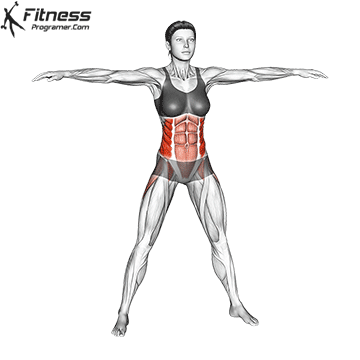 |
Side Bend 2-3×10-15 |  |
Warrior Pose 3×10-15 sec | 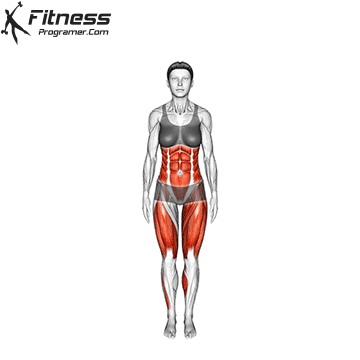 |
Seated Ballerina 2-3×10-15 | 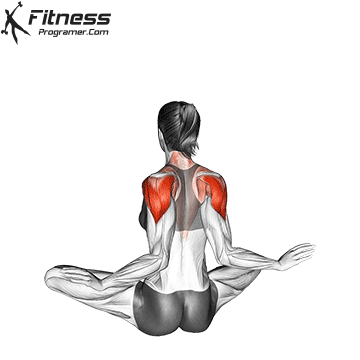 |
Cat Cow 2-3×10-15 | 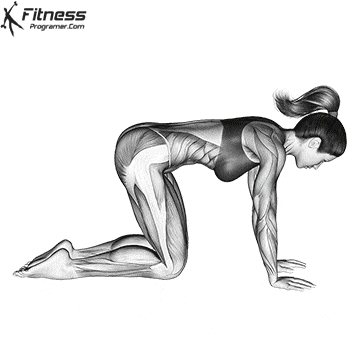 |
90/90 Hip Stretch 2-3×10-15 | 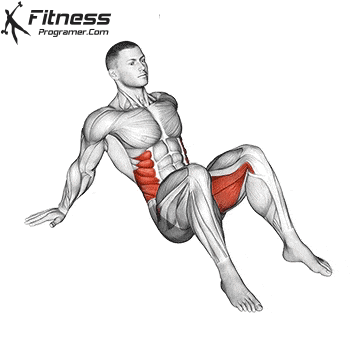 |
Single Knee to Chest 3×10-15 sec | 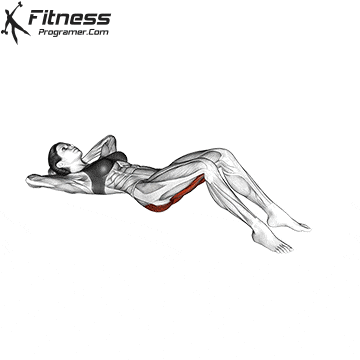 |
Butterfly Stretch 3×10-15 sec | 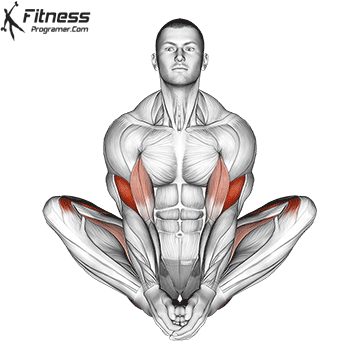 |
Half Frog Pose 3×10-15 sec |  |
Day 4: High-Intensity Interval Training (HIIT)
Day 4 involves High-Intensity Interval Training (HIIT), which is an effective way to boost your cardiovascular fitness, burn calories, and improve your metabolic rate. The afterburn effect of HIIT continues to burn calories post-workout. Here’s a sample HIIT workout:
Warm-up (5-10 minutes):
- Start with a 5-10 minute warm-up of light cardio to raise your heart rate and prepare your body for intense exercise. Options include jogging, jumping jacks, or cycling at a moderate pace.
Main HIIT Workout (10-15 minutes): Perform the following HIIT circuit. Each exercise should be done at high intensity for 15-20 seconds, followed by a 10-20 second rest or low-intensity recovery period. Repeat the circuit 4-5 times with 1-2 minutes of rest between circuits:
1. Jumping Jacks:
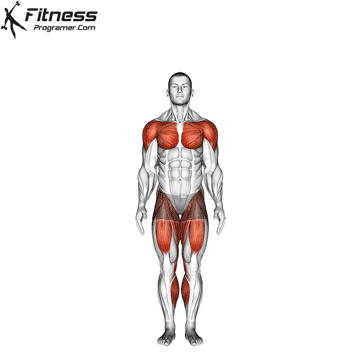
Perform jumping jacks as fast as possible for 15-20 seconds.
2. Burpees:
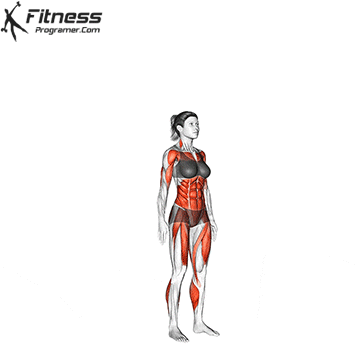
Do burpees for 15-20 seconds, aiming to complete as many as possible during this time.
3. Mountain Climbers:
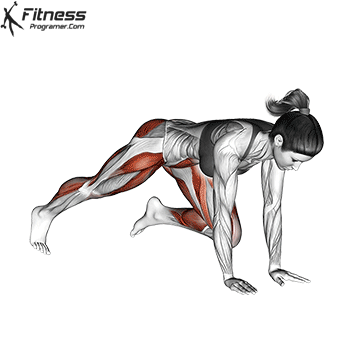
Get into a push-up position and alternate driving your knees toward your chest as fast as possible for 15-20 seconds.
4. High Knees:

Stand in place and jog while bringing your knees as high as possible for 15-20 seconds.
Adjust the intensity and duration of the high-intensity intervals based on your fitness level. The goal is to push yourself during each intense interval and challenge your cardiovascular system.
Cool-down (5-10 minutes):
- Finish with 3-5 minutes of light walking to gradually lower your heart rate and prevent dizziness.
- Perform static stretching exercises to target major muscle groups, holding each stretch for 15-30 seconds.
HIIT workouts can be demanding, so ensure that you stay well-hydrated throughout and pay attention to your body’s signals. If you’re new to HIIT or have any underlying health concerns, consult with a healthcare professional or fitness trainer before starting a high-intensity program.
Day 5: LISS (low-intensity steady-state)
LISS workouts provide a mental break from high-intensity training. It allows your body to recover while still engaging in physical activity.
The key to LISS is to maintain a low to moderate intensity level. You should be able to hold a conversation while doing the activity. Your heart rate should generally be around 50-60% of your maximum heart rate. Aim for at least 30 minutes to an hour, depending on your fitness level and goals.
Activities: You can choose from various low-impact activities for your LISS routine, depending on your preferences and equipment availability. Here are some options:
1. Brisk Walking:
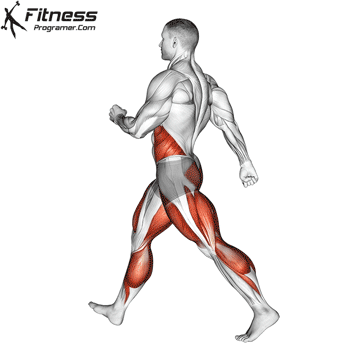
Walking is one of the simplest LISS exercises. Find a flat, comfortable route and maintain a steady pace.
2. Cycling:
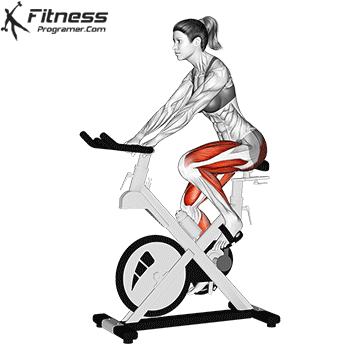
Whether on a stationary bike or a regular bicycle, cycling at a moderate pace is an excellent LISS exercise.
3. Swimming:

Swimming laps at a relaxed pace can be an effective LISS workout, provided you have access to a pool.
4. Elliptical Machine:

If you’re at the gym, the elliptical trainer offers a low-impact way to perform LISS cardio.
5. Rowing:
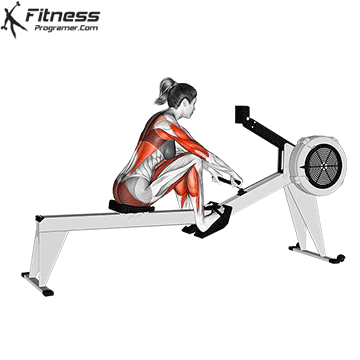
Rowing machines provide a full-body workout at a moderate intensity level.
6. Stair Climbing:
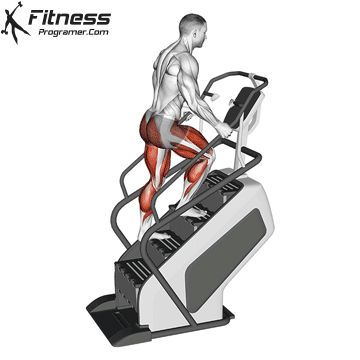
Climbing stairs or using a stair-climbing machine can be an effective low-intensity workout.
Day 6: Strength Training
Continuing with strength training on Day 6 helps to build on the progress made on Day 2. Strength training is essential for increasing muscle mass, which, in turn, accelerates fat burning.
Repeat Day 2 Routine: Perform the same set of strength training exercises, striving to improve your form and gradually increase the weight or resistance as your fitness level improves.
Day 7: Rest
Day 7 is dedicated to rest, which is a crucial component of any effective workout routine. Rest days are essential for allowing your body to recover and repair itself.
Here are some tips on how to make the most of your rest day:
- Complete Rest: On this day, avoid any intense exercise or strenuous physical activity. Instead, prioritize relaxation and recovery.
- Sleep: Use this day to catch up on sleep if you’ve been missing out on adequate rest during the week. Aim for 7-9 hours of quality sleep to support overall recovery and well-being.
- Active Recovery: While it’s a rest day, you can engage in light, non-strenuous activities like gentle walking, stretching, or yoga if it helps you feel more relaxed and rejuvenated.
- Nutrition: Pay attention to your nutrition and make sure you’re consuming a balanced diet rich in nutrients. Consider including foods that support recovery, such as protein, complex carbohydrates, and healthy fats.
- Mental Rest: Don’t forget that rest isn’t just about physical recovery. It’s also an opportunity to mentally unwind and reduce stress. Engage in activities that promote mental relaxation, such as meditation, deep breathing exercises, or simply enjoying a hobby you love.
Pay attention to how your body feels on your rest day. If you have any areas of soreness or discomfort, consider gentle self-massage or foam rolling to aid in recovery.
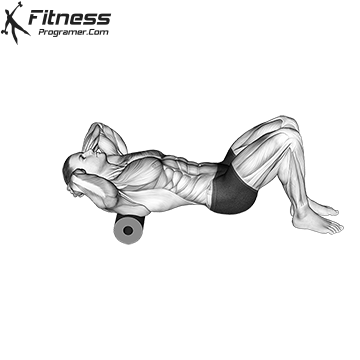
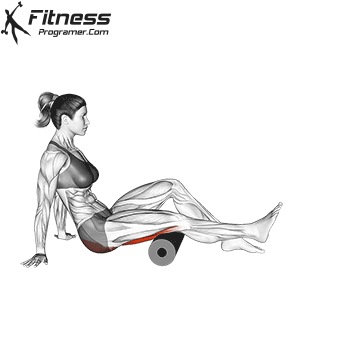
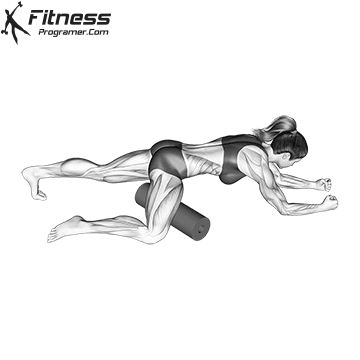
Remember that rest is an integral part of the training process. It allows your muscles to repair and grow stronger, helps prevent overtraining, and reduces the risk of injury. Embrace your rest day as part of your fat burning workout routine and use it to recharge both physically and mentally.
Conclusion:
You’ve completed our 7-Day Intense Fat Burning Workout Routine designed for fast results. In just one week, you’ve taken significant steps toward a leaner, healthier you. Remember that intense workouts like these require proper nutrition, so fuel your body with nutrient-dense foods and stay hydrated.
While this intense routine can jumpstart your fat loss journey, it’s essential to maintain a balanced and sustainable fitness plan for long-term success. Consider incorporating elements of this workout into your regular routine and gradually increasing the intensity as your fitness level improves. Always listen to your body, prioritize safety, and enjoy the journey toward a fitter, more vibrant you!
References:
- Schmitz KH, Jensen MD, Kugler KC, Jeffery RW, Leon AS. Strength training for obesity prevention in midlife women. Int J Obes Relat Metab Disord 27: 326–333, 2003 PMID: 12629559
- J Appl Physiol (1985). 2012 Dec 15; Effects of aerobic and/or resistance training on body mass and fat mass in overweight or obese adults PMCID: PMC3544497
- Physical activity and public health. A recommendation from the Centers for Disease Control and Prevention and the American College of Sports Medicine

